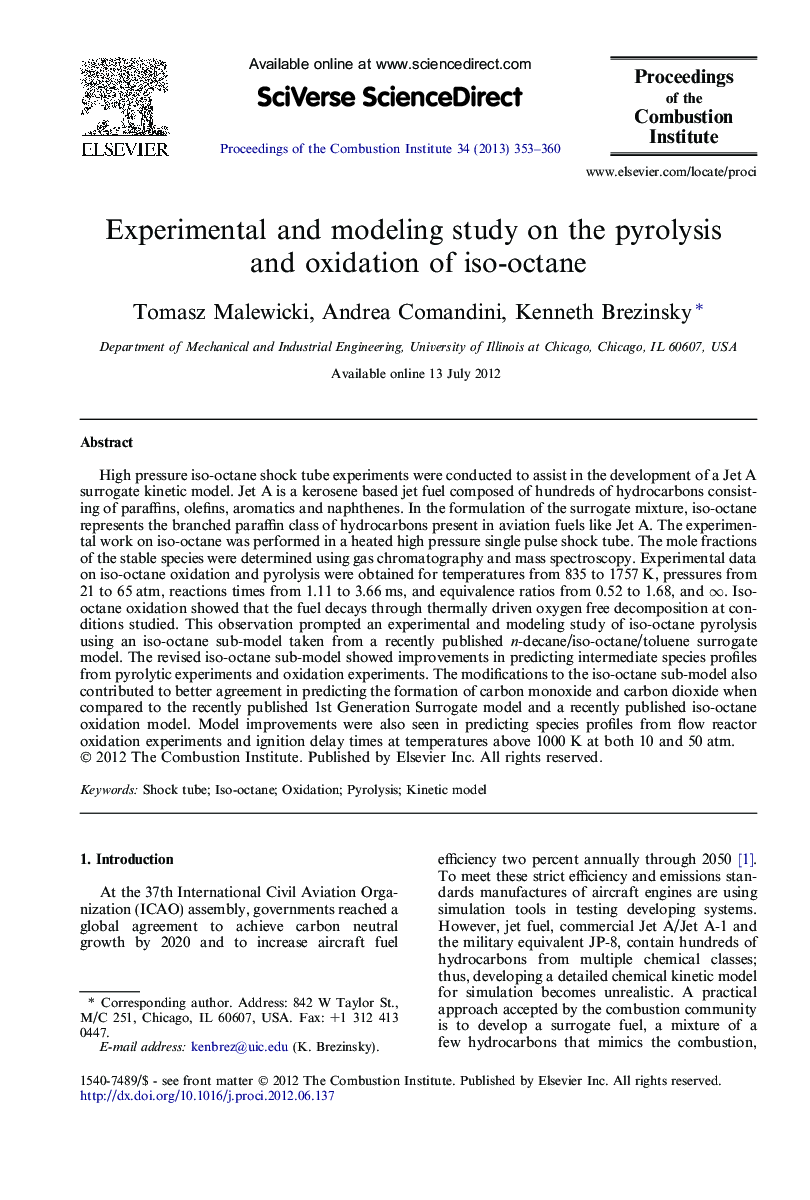| Article ID | Journal | Published Year | Pages | File Type |
|---|---|---|---|---|
| 241134 | Proceedings of the Combustion Institute | 2013 | 8 Pages |
High pressure iso-octane shock tube experiments were conducted to assist in the development of a Jet A surrogate kinetic model. Jet A is a kerosene based jet fuel composed of hundreds of hydrocarbons consisting of paraffins, olefins, aromatics and naphthenes. In the formulation of the surrogate mixture, iso-octane represents the branched paraffin class of hydrocarbons present in aviation fuels like Jet A. The experimental work on iso-octane was performed in a heated high pressure single pulse shock tube. The mole fractions of the stable species were determined using gas chromatography and mass spectroscopy. Experimental data on iso-octane oxidation and pyrolysis were obtained for temperatures from 835 to 1757 K, pressures from 21 to 65 atm, reactions times from 1.11 to 3.66 ms, and equivalence ratios from 0.52 to 1.68, and ∞. Iso-octane oxidation showed that the fuel decays through thermally driven oxygen free decomposition at conditions studied. This observation prompted an experimental and modeling study of iso-octane pyrolysis using an iso-octane sub-model taken from a recently published n-decane/iso-octane/toluene surrogate model. The revised iso-octane sub-model showed improvements in predicting intermediate species profiles from pyrolytic experiments and oxidation experiments. The modifications to the iso-octane sub-model also contributed to better agreement in predicting the formation of carbon monoxide and carbon dioxide when compared to the recently published 1st Generation Surrogate model and a recently published iso-octane oxidation model. Model improvements were also seen in predicting species profiles from flow reactor oxidation experiments and ignition delay times at temperatures above 1000 K at both 10 and 50 atm.
